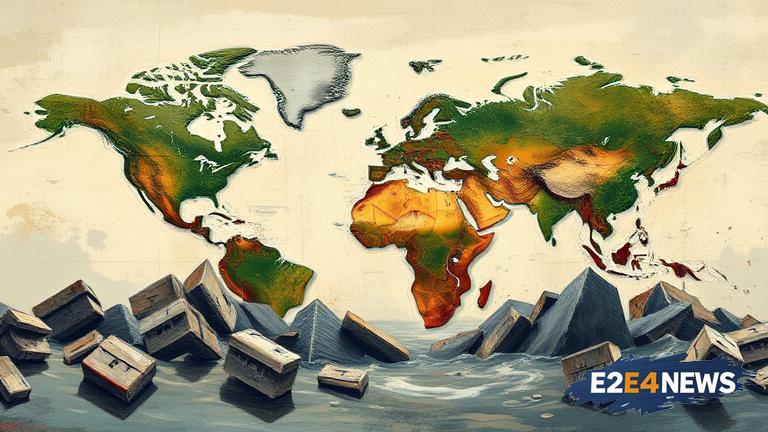The rare earth crisis has been brewing for years, with China’s stranglehold on the market causing concern among governments and industries worldwide. Rare earth elements, a group of 17 metals, are crucial for the production of high-tech electronics, renewable energy technologies, and advanced military equipment. The global demand for these elements has been increasing exponentially, driven by the growing need for technologies such as smartphones, electric vehicles, and wind turbines. However, China’s control over the rare earth market, accounting for over 90% of global production, has created a precarious situation. The country’s dominance in the market has allowed it to manipulate prices, restrict supply, and use rare earths as a geopolitical tool. This has led to a crisis, with many countries scrambling to secure alternative sources of rare earths. The United States, in particular, has been affected, with its military and tech industries heavily reliant on Chinese rare earths. The US government has been trying to reduce its dependence on China, with efforts to revive domestic rare earth production and explore alternative sources. However, these efforts have been hindered by the high costs and environmental concerns associated with rare earth mining. Other countries, such as Australia, Canada, and Malaysia, have also been trying to capitalize on the rare earth boom, with new mines and processing facilities being developed. Despite these efforts, the global rare earth market remains volatile, with prices fluctuating wildly and supply chains vulnerable to disruption. The crisis has also raised concerns about the environmental and social impacts of rare earth mining, with many mines being linked to pollution, deforestation, and human rights abuses. As the world struggles to come to terms with the rare earth crisis, there are fears that it could have far-reaching consequences for the global economy. A shortage of rare earths could lead to a decline in the production of high-tech electronics, renewable energy technologies, and advanced military equipment, with potentially devastating consequences for industries and economies worldwide. Furthermore, the crisis has highlighted the need for greater diversity and security in global supply chains, with many countries recognizing the importance of reducing their dependence on a single supplier. In response to the crisis, there have been calls for greater investment in rare earth research and development, as well as efforts to improve recycling and reprocessing technologies. Additionally, there have been moves to establish new international agreements and regulations to govern the rare earth market, with the aim of promoting greater transparency, stability, and sustainability. As the rare earth crisis continues to unfold, it is clear that the world is at a critical juncture, with the need for urgent action to address the challenges and opportunities presented by these critical metals. The crisis has also sparked a debate about the role of governments and industries in ensuring the security and sustainability of global supply chains, with many arguing that a more coordinated and collaborative approach is needed. In conclusion, the rare earth crisis is a complex and multifaceted issue, with far-reaching consequences for the global economy, environment, and society. As the world navigates this crisis, it is essential that we prioritize sustainability, security, and diversity in global supply chains, while also promoting greater investment in research and development, recycling, and reprocessing technologies. By working together, we can mitigate the risks associated with the rare earth crisis and ensure a more stable and prosperous future for all. The rare earth crisis is a wake-up call for the world, highlighting the need for greater awareness and action on the critical issues of supply chain security, sustainability, and diversity. As we move forward, it is essential that we prioritize the development of new technologies and strategies to reduce our dependence on rare earths, while also promoting greater transparency and cooperation in the global rare earth market. Ultimately, the rare earth crisis presents an opportunity for the world to come together and address the common challenges and opportunities presented by these critical metals, and to work towards a more sustainable and secure future for all.





